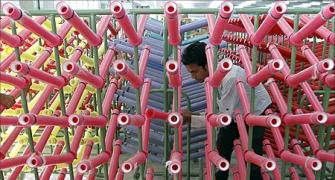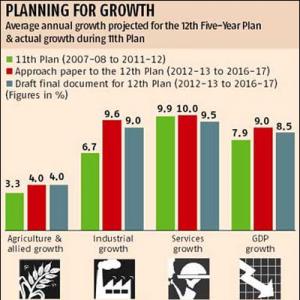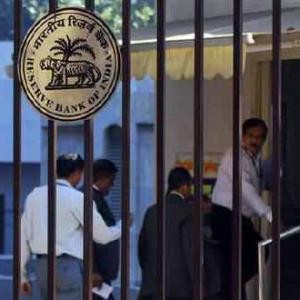 Even as Reserve Bank of India Governor D Subbarao pitched for switching over to Producers Price Index to measure inflation, a journey to the new index does not seem to be smooth.
Even as Reserve Bank of India Governor D Subbarao pitched for switching over to Producers Price Index to measure inflation, a journey to the new index does not seem to be smooth.There is no consensus on the new index.
While many feel PPI would not be a feasible idea for India considering shortcomings like data collection for agriculture commodities, some analysts say the new index could be experimented at least with the manufacturing sector.
"I am not too sure about PPI. Everyone hears a new term and they think it is a great thing," said Pronab Sen, principal advisor, Planning Commission.
The fact is that PPI, wherever it's done, is a synthetic index and is based on the input/output matrix, which in India's case is not updated too often, Sen, who had earlier served as the chief statistician, said. "I am perfectly happy with WPI (wholesale price index)."
Another key member of the Planning Commission said PPI required a whole set of calculation which is not available with the WPI weighting system.
However, he said one way of doing it was simply a re-weighting of the items.
PPI is a measure of change over time in the selling price for producers for their output.
It is usually the first commercial transaction in goods and services produced which gives an idea of margins on different products and incidence of taxes. It indicates the cost pressures in an economy.
Since it measures value addition in prices, input prices have to be deducted to arrive at PPI. Most countries have PPI instead of WPI.
The US switched to the PPI model 1978.
"PPI is feasible in western countries, since the share of food is less there.
In India, weight of food products is not that less, making data collection a difficult task," said an official at the Ministry of Statistics and Programme Implementation.
Primary food items (those in raw form) have a weight of little over 14 per cent in WPI. Together with processed food products, total weight of food items is little over 23 per cent in WPI.
In the nascent consumer price index, food items have a weight close to 50 per cent. In segmented CPIs, food items have a weight of up to 69 per cent.
For agricultural produce, it is very difficult to factor out cost of production from PPI, Sen said. "Getting farmers' balance sheet won't be possible.
WPI captures mandi price.
For PPI, you would have to get farm-gate price. To get data of 72 million farms, you think
you are going to get that? Impossible," he said.
However, another Planning Commission member Saumitra Chaudhuri, who is chairing a committee to examine the feasibility of PPI, said the new index did not require input-output matrix.
Arun Singh, senior economist with Dun and Bradstreet, also said having a PPI is not impossible. "Our target should be PPI".
Subbarao wanted PPI because it measures service price movements as well.
However, Chief Statistician T C A Anant said to get price indices for services, whether in PPI or WPI, is not as easy since services have much more different grades of qualities than manufacturing.
However, he said, PPI could be started with manufacturing and then gradually expanded to other sectors.
"It may not be feasible to get PPI for all sectors, but it is definitely possible to start with manufacturing and then widen it up.
"You need not get PPI for all sectors as that may be difficult, but you may do it for manufacturing, where it is distinctly feasible. I think there are problems with sectors outside manufacturing," added Anant.
A Planning Commission member said:" You got to have price collection agencies for services.
"No data comes for free, someone has to put in an effort. Services component will have to be done separately.
"It can't be part of PPI very soon."
Narrating his experience with initiating PPI in India, another Planning Commission member said when he was doing the analysis of WPI around 2004, people had been sent all over the world to find how others calculate PPI.
"Unfortunately, people who were trained for this are no longer involved with that work. So the whole work has to restart."
Sen said there can't be one index that serves all requirements.
"If you say there is one index that fulfils all the requirements, you are kidding yourself."
Anis Chakravarty, senior director, Deloitte, said instead of so many indices, the focus should be on improving the existing indices we have.
"CPI is the best way to go, as it captures services as well. So let's not have two-three different indices, but focus on CPI."
The origins of PPI is quite old.
In India, the Department of Industrial Policy and Promotion has constituted a 31-member committee on revision of the current series of WPI, which has 2004-05 as the base year.
The terms of reference of the committee, headed by Chaudhuri, also include that the committee will look at the most appropriate base for PPI.
The committee has been asked to submit report by December 31 this year.










